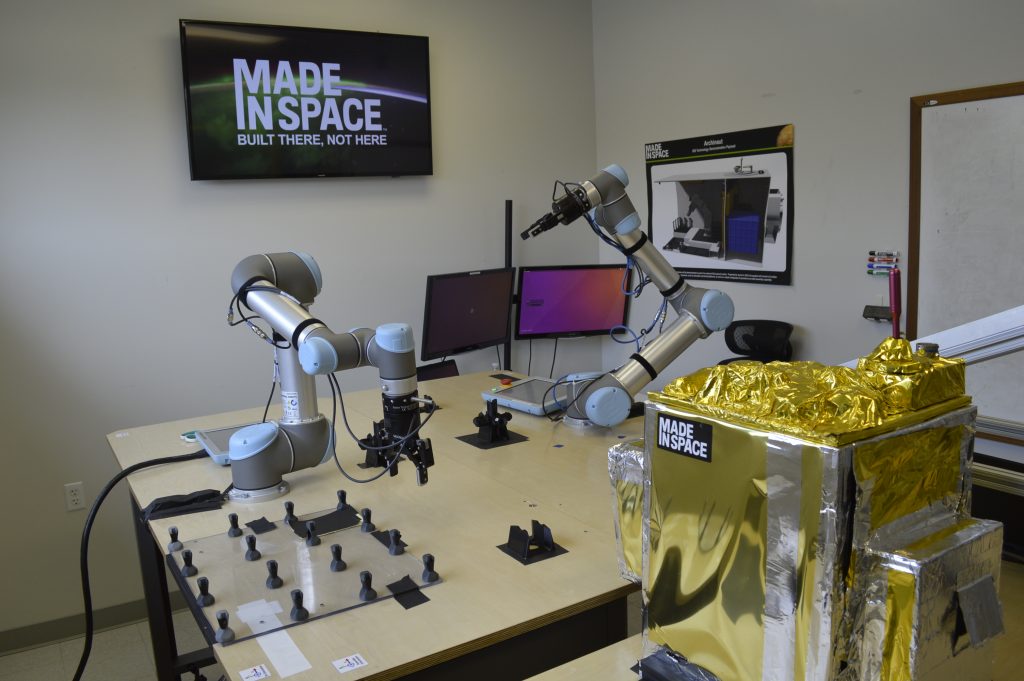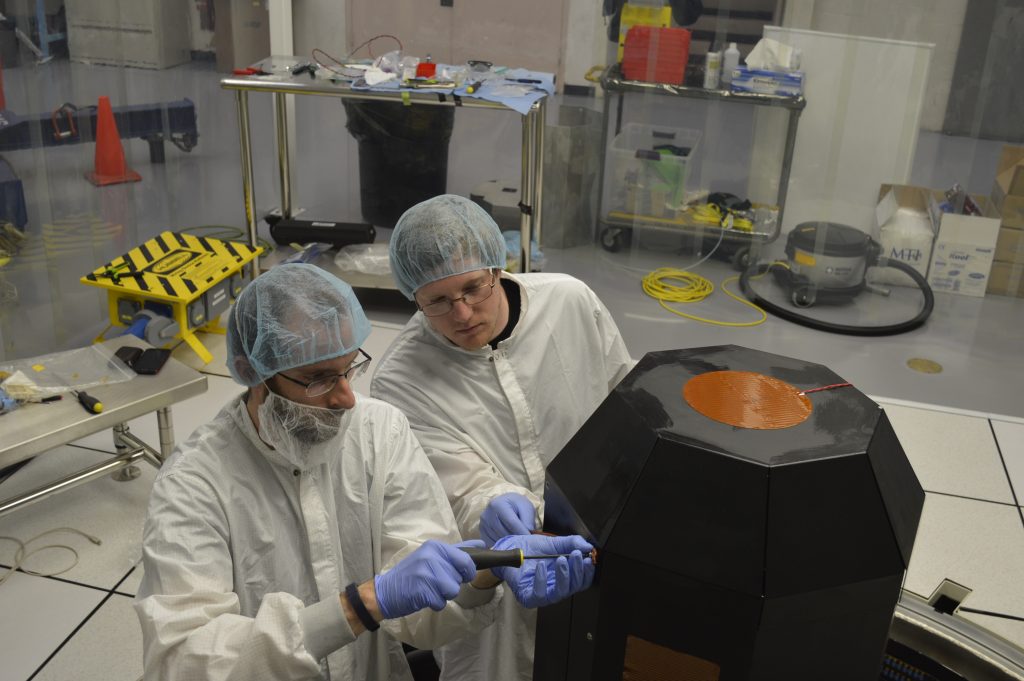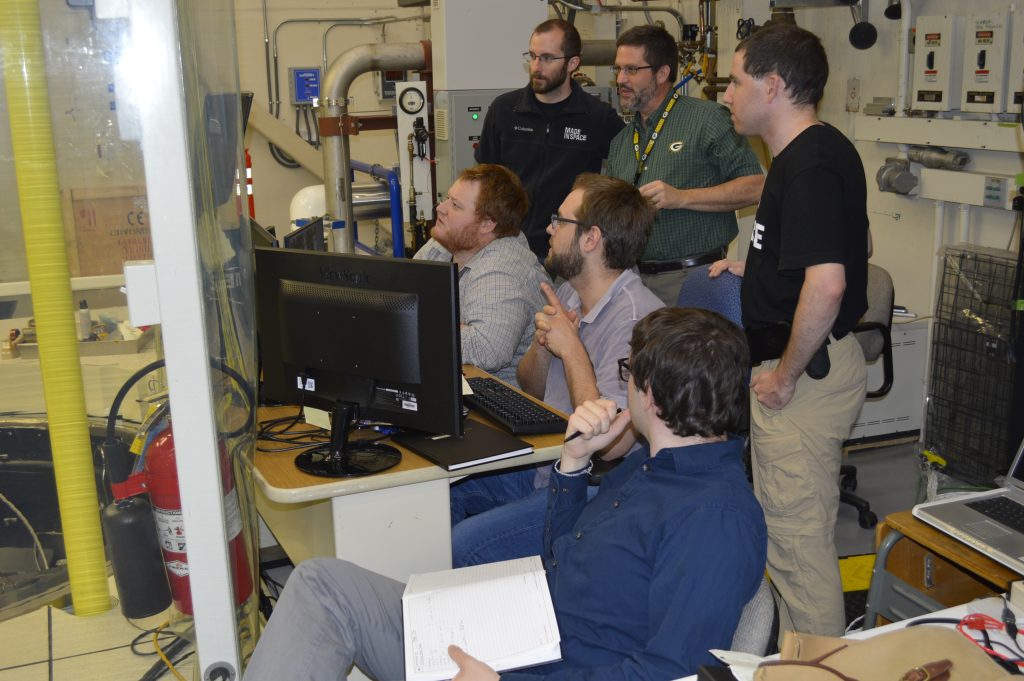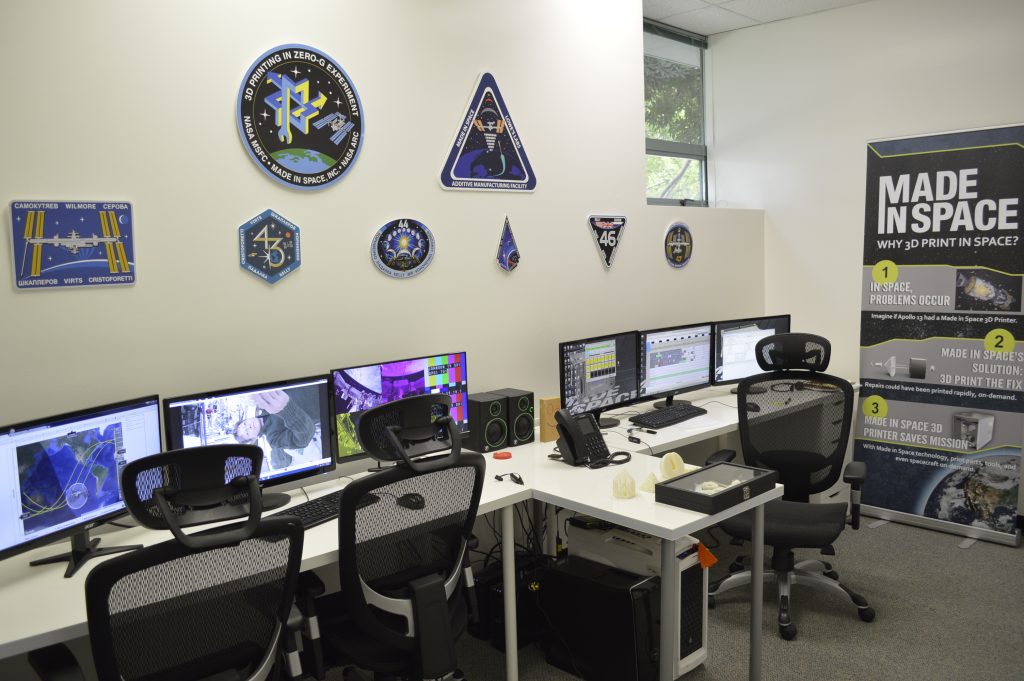In March we reported on a system and method for assembling a spacecraft such as a satellite in space from Made In Space.
Now photos and more details are available demonstrating how Made In Space plans to additively manufacture extended structures off-earth.

In conjunction with NASA, testing is underway of the a key part of the in-space manufacturing and assembly technology, Archinaut.
Using a thermal vacuum chamber (TVAC) at NASA Ames Research Center’s Engineering Evaluation Laboratory (EEL), MIS’s Extended Structure Additive Manufacturing Machine (ESAMM) demonstrated it can 3D print in the vacuum and temperature environment of space.

The aim of the project is to develop a system that can enable next generation, space-optimized satellite design and deployment.
3D printing in space – several approaches
The MIS system uses engineering thermoplastics mix of, Polyether Imide (PEI) – often referred to by the brand name ULTEM and Polycarbonate (PC).

Separate research is also looking at how the vacuum of space might be harnessed for additive manufacturing using metals. For example metal wire deposition 3D printing techniques on earth require a high vacuum environment to operate, this would not be a requirement in space – allowing substantially larger structures to be fabricated.
Working in a low gravity environment also means that design constraints – such as support material – can be disregarded. A further advantage of in-space manufacture is the avoidance of the extreme severe conditions encountered during launch.
Further interest in space-based 3D printing has come from groups interested in using in-situ materials such as lunar regolith. 3D Printing Industry heard from NASA’s Dr. Raymond ‘Corky’ Clinton on this topic, you can read our report here.
The work by Made In Space was performed under the MIS Tipping Point contract with NASA. MIS says, this “first-ever extended 3D-printed objects in a space-like environment [is] a significant milestone on the path to manufacturing systems and satellites in space.”
Technological readiness demonstrated
Having proved the concept, ESAMM hardware was then used to manufacture a beam structure measuring over 30 meters in length.


Andrew Rush, MIS President & CEO said, “These successful demonstrations mean that on-demand, adaptable manufacturing of complex structures in space has been significantly derisked.”
“This expands the design space. We hope that mission planners can now more confidently design missions around in-space manufacturing and assembly, optimizing satellites for their operational environment, not just launch.”
Made in Space has offices in Florida, California, Alabama and Ohio, and plans to utilise the space environment to develop manufacturing solutions to commercial, industrial, research and defense challenges.
The company’s vision is to enable the future of space exploration by offering off Earth manufacturing capabilities.
To be the first to hear about the latest news about the 3D printing industry, sign up to our newsletter, like us on Facebook and follow us on Twitter.
If you’re looking for a career in 3D design or moving in the industry, sign up to our 3D printing jobs site.



